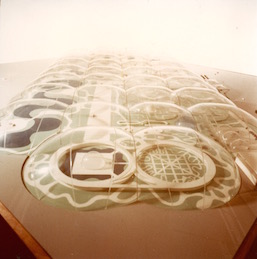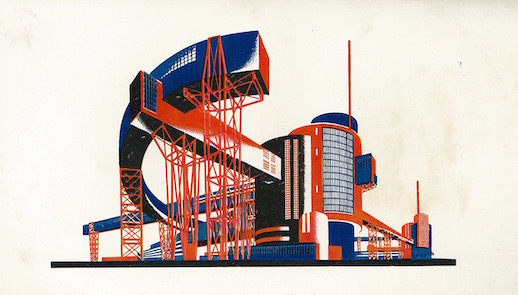“Impossible” Architecture
Architecture is seen as existing on the boundary between art and engineering. The architect must tailor his ideals to real-life constraints, whether they be the wishes of the client or physical, economical, or societal issues. The architect in the end is expected to create something that can be brought into reality.
“Impossible” Architecture – Another History of Architecture at the Museum of Modern Art, Saitama is about architecture that has never been realized. The curators are very clear that this show isn’t about structures that were completely infeasible to build, but rather about plans that for some reason or the other went unbuilt, and what can be learned from these unfinished projects. It could be that the architecture was purely conceptual and never meant to be built. Or, it was designed to be built but in the end, through some constraint, it was never constructed or it was passed over for a more favorable option. The show asks us to question what constitutes possibility as opposed to impossibility and how this idea is always in flux.
.jpg)
The exhibition is curated by a team that includes the Japanese architectural historian Taro Igarashi. It covers an almost-encyclopaedic breadth of Japanese and international work. Its genesis is an observation on the famous conceptual architectural work Tatlin’s Monument to the Third International (1919-20): This Structivist piece consists of a spiral frame in which is a cube, a pyramid, a cylinder, and a sphere would rotate on the axis over the course of a year, a month, a day, and an hour, respectively. Although a lack of steel coupled with a chronic housing shortage at the time prevented its construction, it wasn’t a complete impossibility. However, the piece is universally recognized in art and achitectural history books as an important political statement that celebrated modernity, industrialism, and the ideals of the early communist revolution.

Of particular note is the scale model of Shusaku Arakawa and Madeline Gins’ The Process in Question/Bridge of Irreversible Destiny, a meditation on the experientiality of space as reflected in language. The original thirteen-meter model is used to describe the work by the artist couple. The model gives us a far better understanding of the spaces they intend to create that cannot be explained in words or pictures. (Though seemingly conceptual, the piece is actually being considered for construction). Also notable is Pierre-Jean Giroux’s video of modern renderings of conceptual Metabolist works by Kurokawa and Isozaki. Taken out of the history books, they force us to confront the temporal meaning of “impossibility” and the fact that maybe in today’s world, these pieces could actually be engineered and built.
The most controversial part of the exhibition is saved for the end: A gallery is dedicated to the design of the New National Stadium by Zaha Hadid and +Architects JV. Here the design is detailed in a model, renderings, videos, and drawings. Though the design is daring and forward thinking, there is nothing to suggest that it wasn’t possible to be built, as evidenced by the abundance of detailed construction drawings also on display. As such, the curators force us to reconsider why the stadium was deemed “impossible” to build. Why is it that the Prime Minister’s office decided to remove the design, replacing it with a competition predicated on the adoption of a Japanese design with only Japanese architects? It is here that the curators have made a distinct comment on the current government, chiding it for playing on public xenophobia and using the stadium design as a smokescreen to distract from more serious issues. Regardless of your views on the situation, in the age where exhibitions are treated like blockbuster films, these curators should be praised for their braveness in expressing a counterpoint to the narrative being told by the government and mainstream press.

From the standpoint of a foreigner, it was disappointing to find that the detailed and meticulous Japanese explanations were not translated to English. While the pieces themselves are compelling, understanding the context and intent of the artist/architect is made difficult for those who cannot read Japanese. This does not, however, negate the interest and importance of this exhibition. This is a well-crafted show and the volume, selection, quality, and presentation of the work makes it worth the trek to suburban Saitama.



